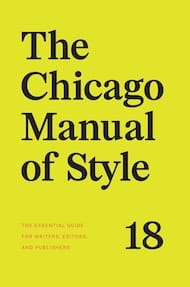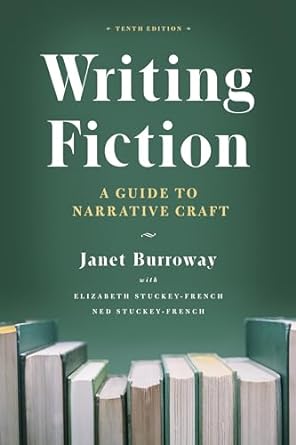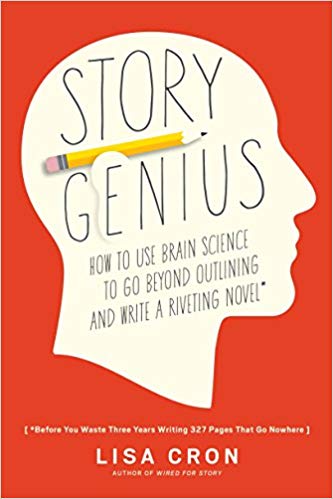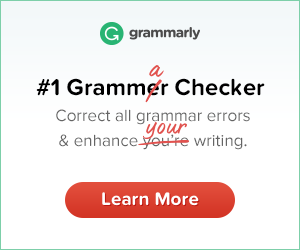Best Noise-Canceling Headphones for Writers: Enhance Focus and Creativity
The Best Books on Writing to Improve Your Craft in 2025
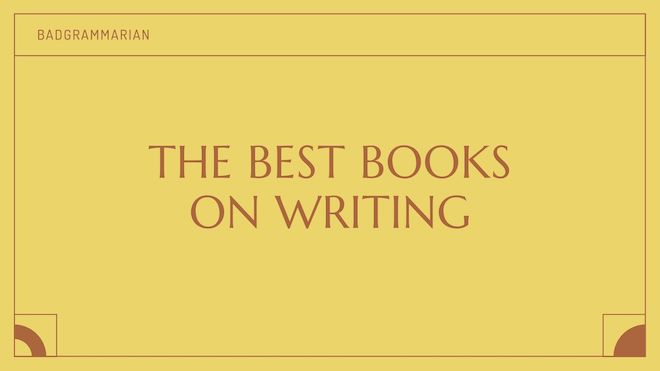
Welcome, fellow writers! Whether you're a seasoned novelist, a budding blogger, or simply someone who wants to improve their communication skills, the right book can make all the difference.
I've curated this list of the absolute best books on writing—a collection that has personally guided and inspired my journey. From mastering the nuances of grammar to unlocking the secrets of compelling storytelling, these books offer invaluable insights and practical advice. Dive in, explore, and discover the resources that will elevate your writing to new heights.
Jump to:
FTC Disclosure: Bad Grammarian may receive compensation from the products we showcase with no added cost to you.
Best Books on Grammar & Style
Master the fundamentals of English grammar and punctuation with these essential books. Perfect for any writer looking to polish their prose and ensure accuracy.
The Elements of Style by William Strunk Jr. and E.B. White
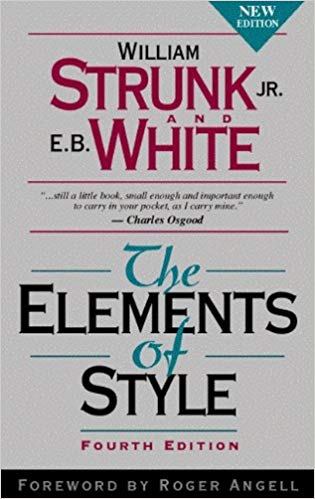
Its concise and authoritative advice on proper usage and composition makes it a go-to reference for writers of all levels. I consider it a non-negotiable tool for those seeking to master the fundamentals of the English language. This is a must-have on any list of the best books on writing.
The Chicago Manual of Style
For writers, editors, and publishers seeking the definitive guide to style and usage, ‘The Chicago Manual of Style, 18th Edition' is an indispensable resource. This comprehensive manual covers various topics, from grammar and punctuation to citation and formatting, providing clear and authoritative guidance for all aspects of written communication. Known for its meticulous detail and practical advice, ‘Chicago' is the go-to reference for ensuring consistency and professionalism in your work.
This book can be a bit pricey, but it will be worth the investment for your writing toolkit. The 18th edition features updated guidelines and reflects the evolving landscape of digital publishing and scholarly communication. Whether you're working on a manuscript, academic paper, or website content, ‘The Chicago Manual of Style' is essential for maintaining the highest standards of accuracy and clarity. It's a cornerstone of our best books on writing category, particularly for those focused on formal writing and publishing.
The Associated Press Stylebook 2024-2026
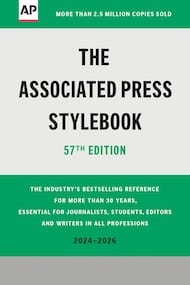
The AP Stylebook is updated regularly to reflect changes in language and current events, making it an indispensable tool for maintaining credibility and professionalism. This edition covers the latest updates and best practices, making it a must-have for writers and editors.
The AP Stylebook is your definitive reference for clear, concise, and accurate communication.
The Only Grammar Book You'll Ever Need: A One-Stop Source for Every Writing Assignment by Susan Thurman
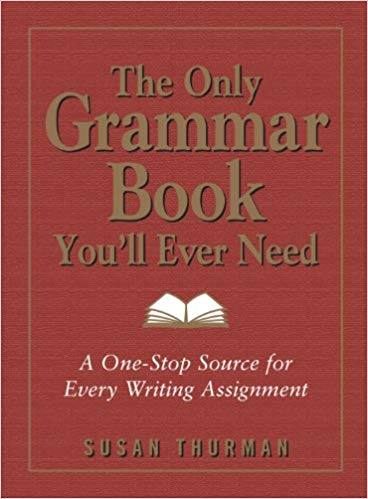
This book provides the essential tools you need to communicate effectively. This is a practical and user-friendly guide, designed to eliminate the confusion and frustration often associated with grammar. If you want to build a solid foundation in grammar and write with confidence, this book is a valuable investment.
The Birds and Bees of Words: A Guide to the Most Common Errors in Usage, Spelling, and Grammar by Mary Embree
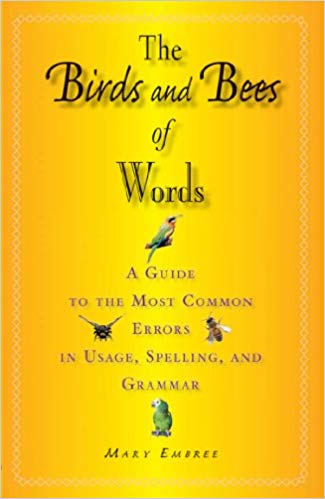
Anyone intrigued by language, fascinated by words, or wants to use our language clearly and effectively will enjoy “The Birds and Bees of Words.”
Grammar Girl's Quick and Dirty Tips for Better Writing by Mignon Fogarty
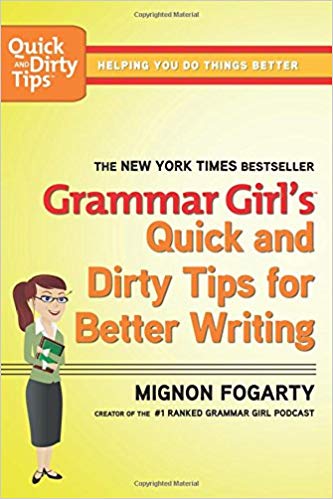
Fogarty, determined to wipe out bad grammar, provides clear explanations and helpful mnemonics to help you recall and apply those troublesome grammar rules. From ‘between vs. among' to comma splices and misplaced modifiers, this book covers a wide range of topics in an accessible and engaging style. If you're looking for a user-friendly guide to improve your grammar and write confidently, Grammar Girl is here to help!
Semicolon: The Past, Present, and Future of a Misunderstood Mark by Cecelia Watson
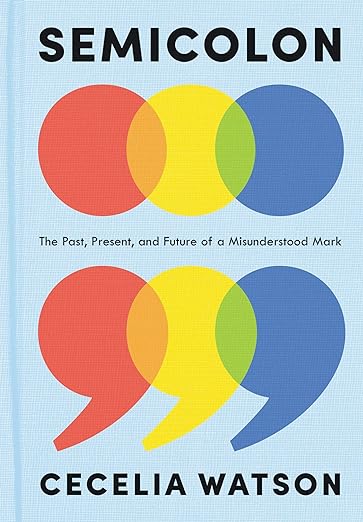
With a “gadfly's spirit,” Watson thoughtfully lobbies for written English that resists restrictions. If you're a grammar enthusiast, a history buff, or simply someone who appreciates a good story, ‘Semicolon' offers a fresh and insightful perspective on a small but powerful piece of punctuation.
Best Books on Nonfiction Writing & Memoir
Explore the art of crafting compelling narratives and characters with these expert resources. From character development to plot twists, find the tools to bring your Learn the techniques of writing engaging and informative nonfiction and memoirs with these invaluable book selections. Discover how to tell true stories with clarity and impact.
On Writing Well: The Classic Guide to Writing Nonfiction by William Zinsser
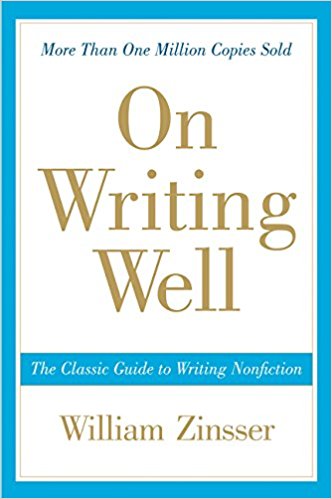
Zinsser's practical advice covers a wide range of topics, from word choice and sentence structure to the nuances of style and tone. He encourages writers to develop their unique voice and to write with humanity and warmth. Whether you're a student, a professional, or an aspiring author, ‘On Writing Well' provides invaluable tools for crafting compelling narratives and impactful prose. This book is not just a guide; it's a mentor, offering wisdom and encouragement to writers of all levels. If you want to refine your nonfiction writing and communicate with clarity and grace, this book is essential to your library. It’s a key resource and a top recommendation in our best books on writing list.
Storycraft, Second Edition: The Complete Guide to Writing Narrative Nonfiction by Jack Hart
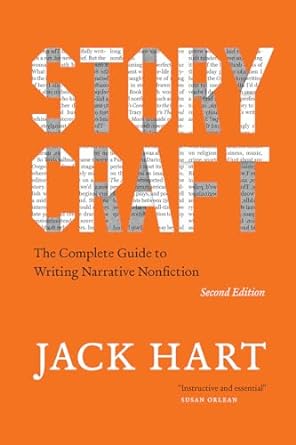
The second edition expands on the original by delving into podcasting and incorporating new insights from recent research into storytelling and the brain. If you're a journalist, nonfiction writer, or anyone looking to master the art of narrative, ‘Storycraft' provides invaluable lessons gleaned from Hart's decades-long career guiding Pulitzer Prize-winning narratives. It’s a key resource for understanding and executing narrative nonfiction and a top recommendation in our best books on writing category.
On Writing: A Memoir of the Craft by Stephen King
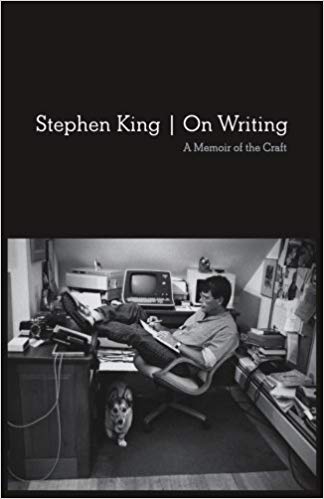
King blends vivid memories from his life – from childhood to his near-fatal accident – with invaluable lessons on the craft of writing, covering everything from the basic tools of the trade to the importance of perseverance. ‘On Writing' is both inspiring and empowering, offering a revealing and often humorous look into the mind of a master storyteller. Called a “one-of-a-kind classic” by The Wall Street Journal, and “The best book on writing. Ever.” by The Plain Dealer, this book is a must-have for any serious writer.
Consider This: Moments in My Writing Life after Which Everything Was Different by Chuck Palahniuk
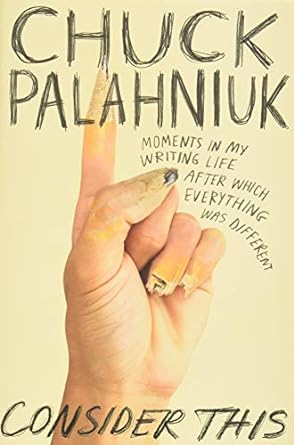
Drawing on his own experiences, beloved classics, and a “kitchen-table MFA” culled from fellow authors, Palahniuk combines practical advice with concrete examples, anecdotes from decades on the road, and much more. This is a love letter to stories, storytellers, and books themselves. If you're a fan of Palahniuk's work or an aspiring writer looking for unconventional wisdom and a peek into the mind of a modern master, ‘Consider This' is a must-read.
Working by Robert Caro
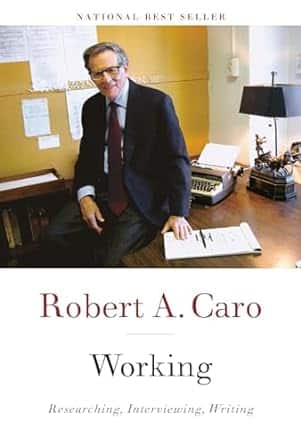
From his relentless pursuit of primary sources to his legendary interviewing techniques, Caro provides practical advice and inspiring anecdotes that will resonate with writers of all genres. ‘Working' is more than just a how-to guide; it's a testament to the power of perseverance and the importance of uncovering the truth.
As The Washington Post stated, “Caro is a master of the form.” If you're passionate about writing, history, or simply pursuing excellence, ‘Working' is an essential addition to your library.
Best Books on Fiction Writing
Explore the art of crafting compelling narratives and characters with these expert resources. Find the tools to bring your stories to life from character development to plot twists.
Bird by Bird: Some Instructions on Writing and Life by Anne Lamott
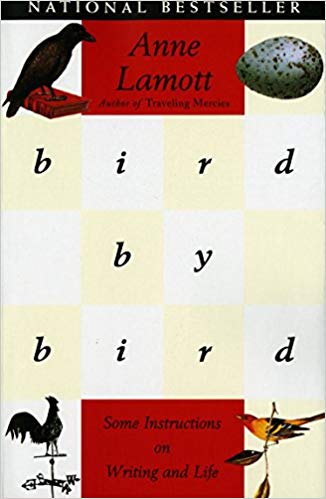
It's a must-read for anyone ever intimidated by the blank page. Her advice on taking things ‘bird by bird' is an excellent method for those who struggle with large projects. This is a top pick amongst the best books on writing for those seeking encouragement and creative inspiration.
Zen in the Art of Writing by Ray Bradbury
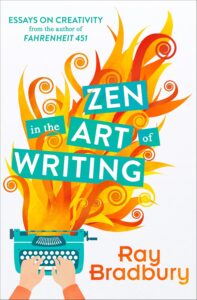
This book is not a dry instruction manual but a celebration of the joy of writing, fueled by Bradbury's infectious enthusiasm. He shares his experiences and insights, revealing how he found inspiration in everyday life and transformed it into captivating stories. Bradbury's writing is a call to embrace the power of intuition, to follow your passions, and to write with unbridled joy.
This book reminds us that writing should be an adventure, a journey of discovery, and a source of pure delight. If you're seeking to reignite your creative spark and rediscover the magic of storytelling, ‘Zen in the Art of Writing' is an essential companion.
Steering the Craft by Ursula K. Le Guin
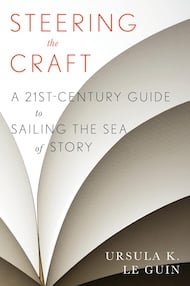
Her exercises and examples make this book both informative and engaging. I especially appreciated her emphasis on the importance of listening to the language. This is one of the best books on writing fiction.
Writing Fiction, Tenth Edition: A Guide to Narrative Craft by Janet Burroway
For decades, Janet Burroway's “Writing Fiction” has been a vital resource for both aspiring and experienced fiction writers. This tenth edition of the bestselling classic, widely used in creative writing programs across the United States, offers practical and comprehensive guidance on all aspects of narrative craft, from freewriting to final revisions.
Burroway adopts an approachable tone and provides clear explanations, making complex concepts easy to understand. The book includes diverse examples and exercises that promote hands-on learning. Whether you're concentrating on character development, plot structure, point of view, or any other element of fiction, this book offers invaluable insights and techniques to enhance your storytelling.
This edition features updated advice from contemporary authors and discusses current topics such as distraction, appropriation, various genres, and young adult fiction.
The Writer's Journey: Mythic Structure for Writers by Christopher Vogler:
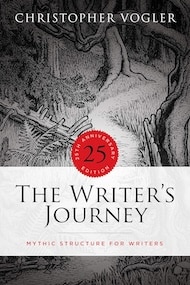
Vogler’s work provides a clear roadmap for creating stories with universal appeal. I've found it invaluable for outlining complex narratives and understanding characters' emotional arcs. This anniversary edition offers an updated perspective on this classic resource, making it a must-have for anyone serious about mastering the craft of storytelling. It’s a key resource for understanding story structure and a top recommendation in the best books on writing category.
Self-Editing for Fiction Writers by Renni Browne and Dave King
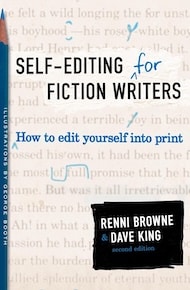
This second edition offers updated insights and exercises, making it a powerful tool for any writer looking to polish their work before submission. If you're serious about mastering the art of self-editing and ensuring your fiction shines, this is a must-have guide.
The Emotion Thesaurus: A Writer's Guide to Character Expression by Becca Puglisi and Angela Ackerman
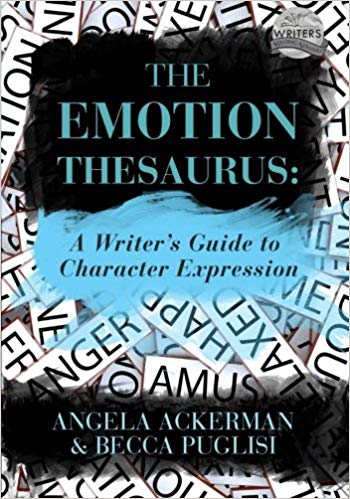
Whether you're struggling to depict subtle nuances or powerful outbursts, this thesaurus will help you find the perfect way to convey your character's feelings. This guide has been hailed as the ‘gold standard for writers'. This book is an invaluable tool if you want to write characters whose emotions leap off the page. It’s a top recommendation for those focused on fiction and character development.
Story Genius: How to Use Brain Science to Go Beyond Outlining and Write a Riveting Novel (Before You Waste Three Years Writing 327 Pages That Go Nowhere) by Lisa Cron
Do you want to write a novel that genuinely captivates readers? In Story Genius, Lisa Cron, a story coach and consultant, reveals how to harness the power of cognitive storytelling strategies. This isn't just another outlining guide; Cron delves into how our brains are wired to process and crave stories, providing a step-by-step method for building a scene-by-scene blueprint for a novel with depth, urgency, and emotional resonance.
Learn how to go beyond plot and create a story that taps into the fundamental elements that make stories unforgettable. If you're tired of first drafts that feel like rewrites, ‘Story Genius' offers a revolutionary approach to crafting a novel with the authority and richness of a sixth or seventh draft, right from the start. It’s a key resource for understanding story structure and one of our favorite books on writing.
Best Books on the Writing Process & General Writing Advice
Discover essential strategies for improving your writing process and unlocking your creative potential. These books offer practical advice for writers of all levels.
Writing Tools: 55 Essential Strategies for Every Writer by Roy Peter Clark
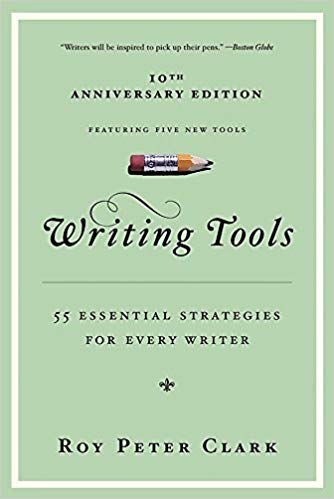
Clark's approach is grounded in real-world examples and actionable advice, making it easy to apply these tools to your own writing. Whether you're a student, professional, or aspiring author, ‘Writing Tools' provides a valuable toolkit for improving your clarity, style, and impact. This book is not just a list of rules, but a guide to understanding the art and science of effective communication.
Everybody Writes: Your New and Improved Go-To Guide to Creating Ridiculously Good Content: 2nd Edition, by Ann Handley
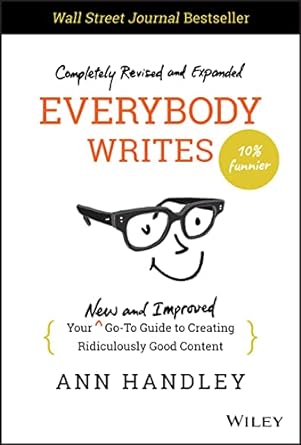
Everybody Writes by Ann Handley is a guidebook for those looking to improve their writing skills, specifically in content marketing. This newly revised and updated edition provides readers with practical, actionable advice and insights on the process and strategy of content creation, production, and publishing. It covers various topics such as attracting and retaining customers with excellent online communication, choosing words wisely, crafting credible and trustworthy content, and more.
With updated examples, tools, resources, and a step-by-step writing framework, readers can access the latest information and insights on writing for marketing. This book includes 19 specific types of content marketers write, providing readers with the fundamentals of each. Handley's witty and practical approach to writing will inspire and boost confidence in readers, making the writing process more enjoyable. By the end of this book, readers will have all the tools and knowledge necessary to create page-turning content that their audience will love consistently, and that will deliver actual results.
Best Books on Book Publishing & Marketing
Navigate the publishing world and learn how to promote your work with these insider guides. Find the resources you need to succeed, from getting a book deal to building your author platform.
Before and After the Book Deal: A Writer's Guide to Finishing, Publishing, Promoting, and Surviving Your First Book by Courtney Maum
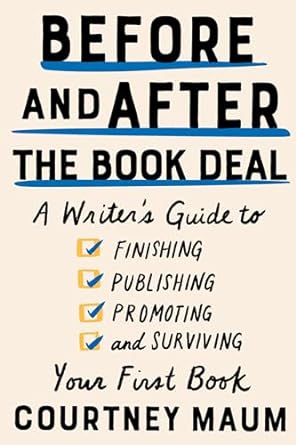
With over 150 contributors, including bestselling authors, agents, and editors, this book covers everything from finishing your manuscript and finding an agent to understanding book deals, promoting your work, and managing the emotional rollercoaster of publication. It addresses logistical and existential questions, offering practical advice and intimate anecdotes on even the most taboo topics in the industry.
How to Blog a Book: Write, Publish, and Promote Your Work One Post at a Time by Nina Amir
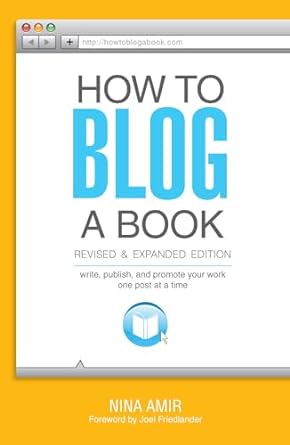
Amir provides a step-by-step guide to planning, writing, and publishing your book using a blog and strategies for promoting your work and building a platform. This revised and expanded edition includes updated information on self-publishing, social media, and online marketing.
If you're looking for an innovative and effective way to write and publish your book, blogging might be the perfect solution. It’s a key resource and a top recommendation in the best books on writing category, particularly for those interested in non-traditional publishing methods. Start blogging your way to a finished book.
Your Next Chapter: Taking Action on Your Writing Goals
I hope this list of the best books on writing empowers you to take your craft to the next level. Each of these books has something unique to offer, whether it's a fresh perspective on grammar, a deep dive into narrative structure, or a behind-the-scenes look at the publishing world. Now, it's your turn! Pick a book that resonates with you and start exploring. Or, if you have a favorite writing book that's not on this list, please share it in the comments below. Let's continue to learn and grow together as writers!
What books are on your list? Did we miss anything? Let us know in the comments!
Also, please review our list of excellent online writing courses. and favorite books on Public Speaking.
Yes! I want Bad Grammarian updates and promotions!
No Spam Zone. We will never spam or sell your email address!
Yes! I want Bad Grammarian updates and promotions!
No Spam Zone. We will never spam or sell your email address!

